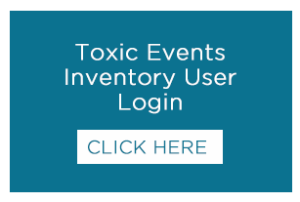The Toxic Effects Inventory
Maintaining Health in a Toxic World
In 1962, Rachel Carson observed, “The most alarming of all man’s assaults upon the environment is the contamination of air, earth, water and sea with dangerous and even lethal materials.” Early in the 21st century, it is evident that her concerns were well founded.
even lethal materials.” Early in the 21st century, it is evident that her concerns were well founded.
The Lancet Commission on Pollution and Health has stated that pollution is the largest environmental cause of disease and death in the world today.
For more than three decades the Foundation for Advancements in Science and Education (FASE) has supported pilot projects, studies, conferences, humanitarian projects and healthcare providers working to understand the impacts of occupational and environmental chemical exposures and to bring relief to those whose quality of life has been diminished by them.
One thing has become clear: untangling the relationships between exposures and illness is a problem of infinite complexity. Real-world exposures involve dizzying numbers of variables in regard to exposure levels, combinations of chemicals, personal history and individual biological sensitivity.
The toxic soup that has become a fact of modern life also includes pharmaceuticals; as early as 2004, scientists began to report traces of antidepressants in drinking water. Scientists from the U.S. Geological Survey found low levels of antibiotics, hormones, contraceptives and steroids and other drugs in 80 percent of the rivers and streams that they sampled. There is also evidence that drugs of abuse and chemical exposures can affect the body in similar ways.
Those who are suffering find that no matter how they may feel, standard tests find that there is “nothing wrong.” At times over the last 5 decades, they have often been told that their problems are “in their head.”
While it is vital that work continues to be done to determine the health effects of chemicals in use, is it the best we can do to expect exposure victims to wait decades for a “final answer,” especially if we know that it may never come?
“Chemical exposure victims deserve to be taken seriously. Too often they find that routine diagnostic tools don’t reflect the impact that exposures have had on their quality of life. Caregivers who are attempting to understand their problems and to bring relief could benefit greatly from a tool that helped them collect and share data.”
David Carpenter, MD,
Director, Institute for Health and the Environment
University at Albany
Project Advisor
The Toxic Effects Inventory
In partnership with an expert group of advisors, FASE is developing a means to document the exposures, symptoms, and quality of life of persons affected by chemical exposures.
This tool will draw upon well-established health and symptom surveys. It will be designed to be easily implemented by all engaged in treating chemical exposures, both to document problems and measure improvements after treatment.
The first phases of the project will include:
- Development of the survey instrument
- Pilot implementation
- Survey refinement
- Further testing and implementation
- Development of a secure, cloud-based interface
We are currently raising funds for this first phase.
When Phase One is complete, we will work with partners and advisors to bring about further refinements and significantly increased implementation.
Project Advisors
Robert Amidon, Esq., Commander (ret.), U.S. Navy
David Carpenter, MD, Director, Institute for Health and Environment, University at Albany
Alan Janusziewicz, MD, Deputy Assistant Surgeon General (ret.), U.S. Army
Kamau Kokayi, MD
Michael Robichaux, MD, former member, Louisiana Senate
Robert Wolfertz, Lt. Colonel (ret.), U.S. Marines
George Yu, MD, Aegis Medical and Research
Project Staff
Keith Miller, President, FASE
Carl Smith, Editor in Chief, FASE
Donate Today
Please help us reach our goal and support this effort to help those affected by toxic exposures.
Contributions of any size can make a difference!




